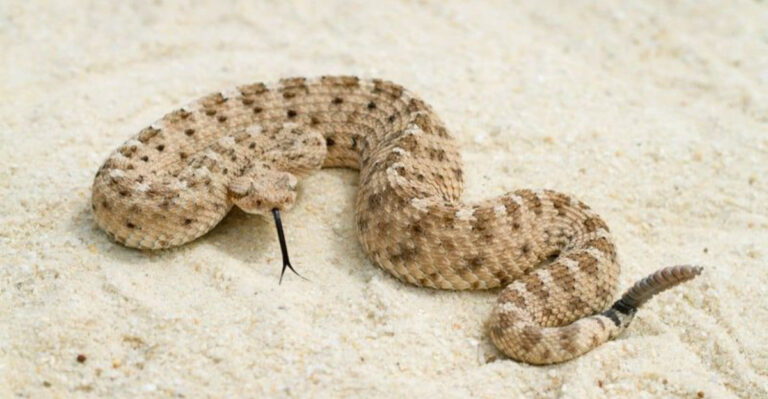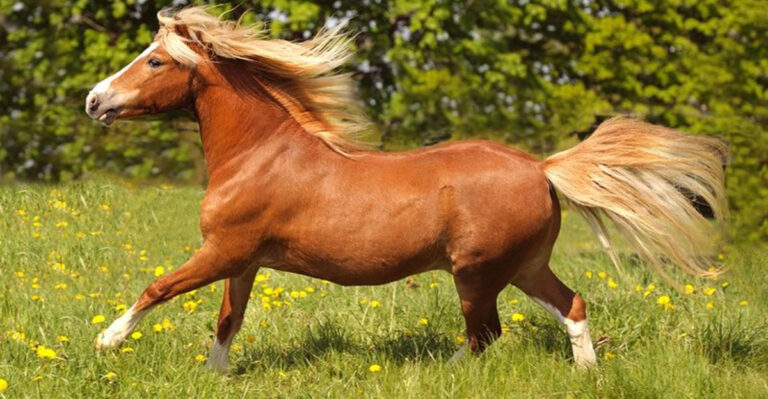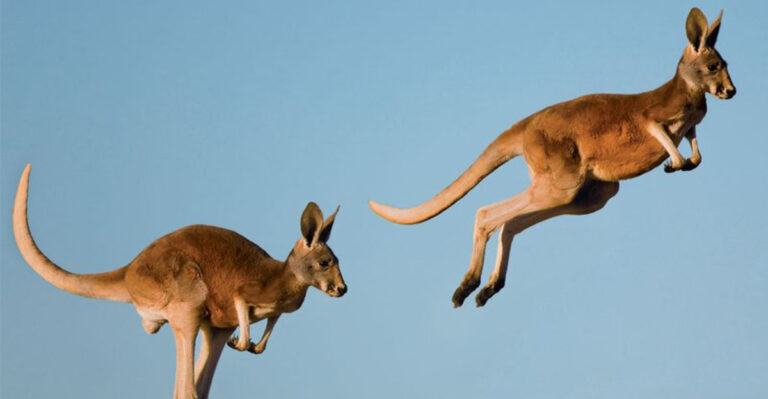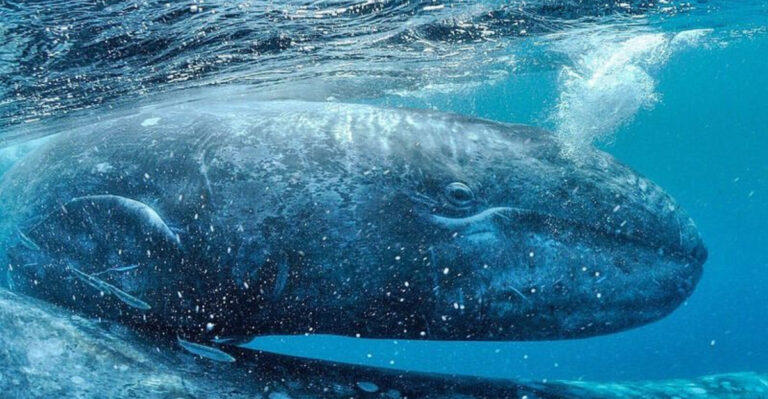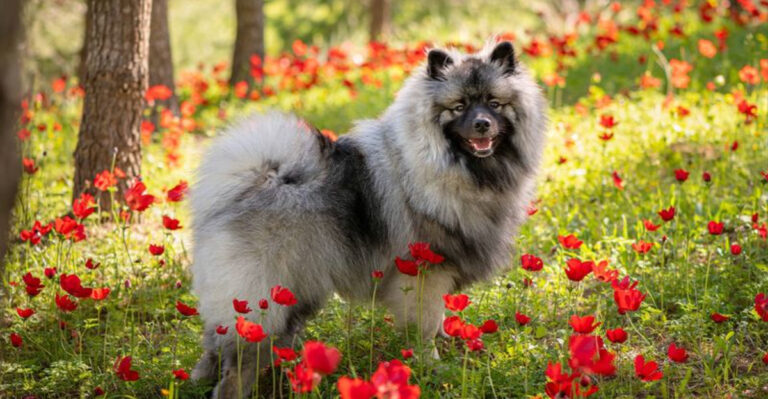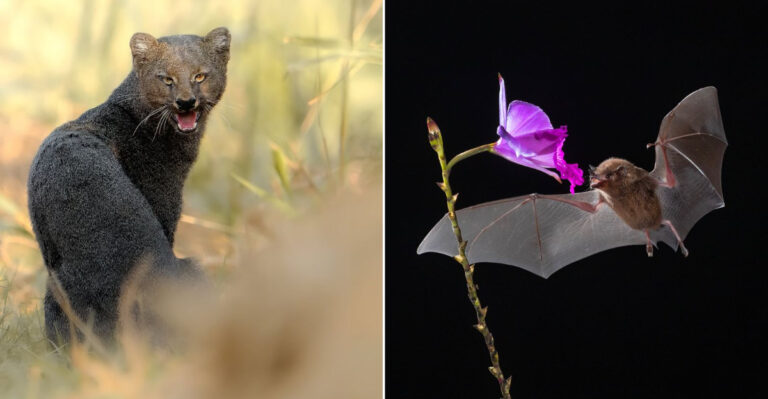Meet The Przewalski’s Horse: The Last True Wild Horse On Earth
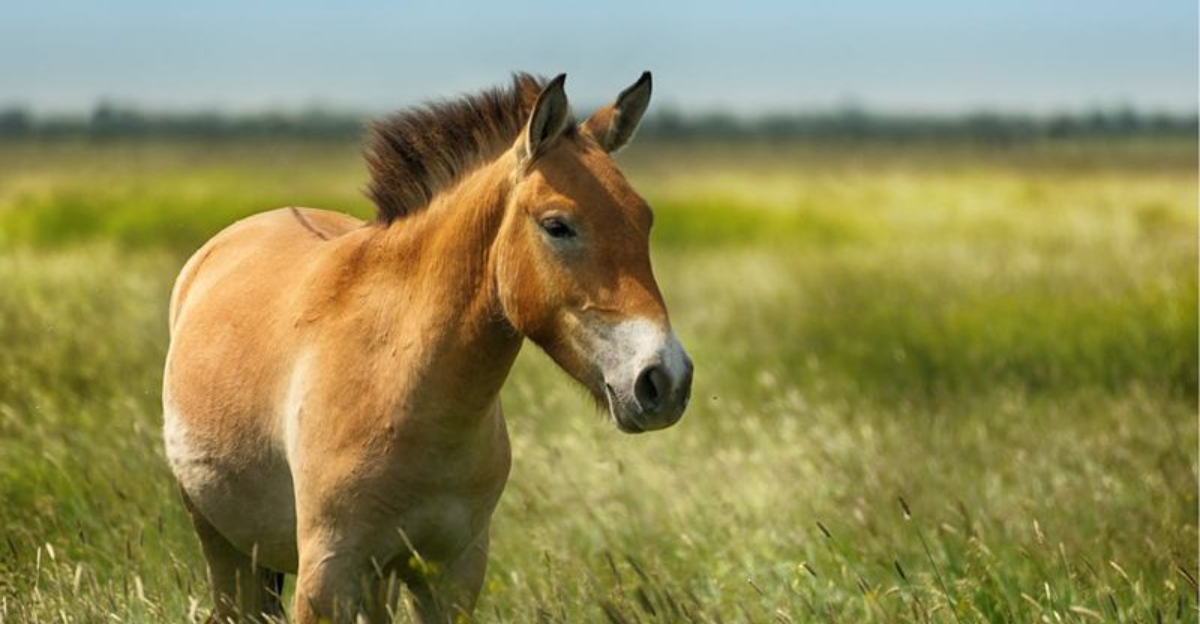
Hidden away in the remote steppes of Central Asia roams a living piece of natural history. The Przewalski’s horse represents our last connection to truly wild equines, having never been domesticated by humans.
These stocky, dun-colored horses nearly vanished forever but have made a remarkable comeback thanks to dedicated conservation efforts.
1. The Only True Wild Horse
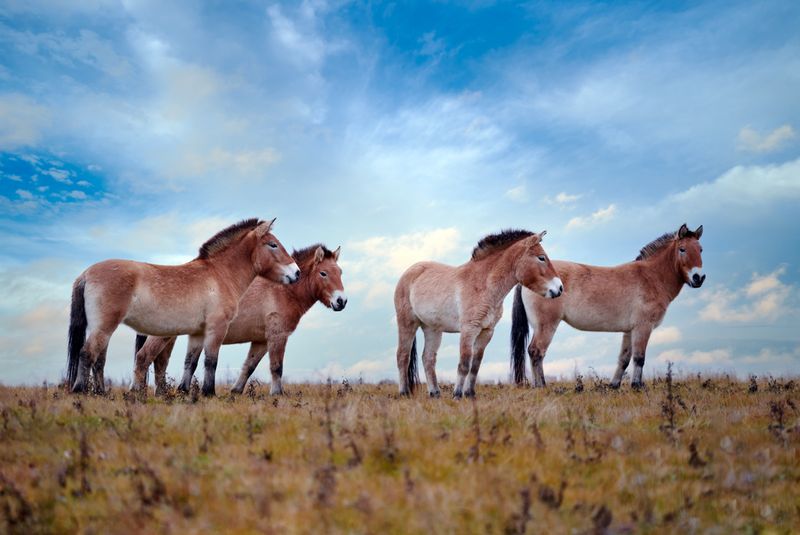
Standing as nature’s last untamed equine, Przewalski’s horses have never known the touch of a saddle or bridle. Unlike mustangs or other feral horses that escaped domestication, these magnificent creatures have remained wild throughout their entire evolutionary history.
Their genetic makeup confirms this unique status, making them living treasures of our planet’s biodiversity.
2. Native To Central Asia
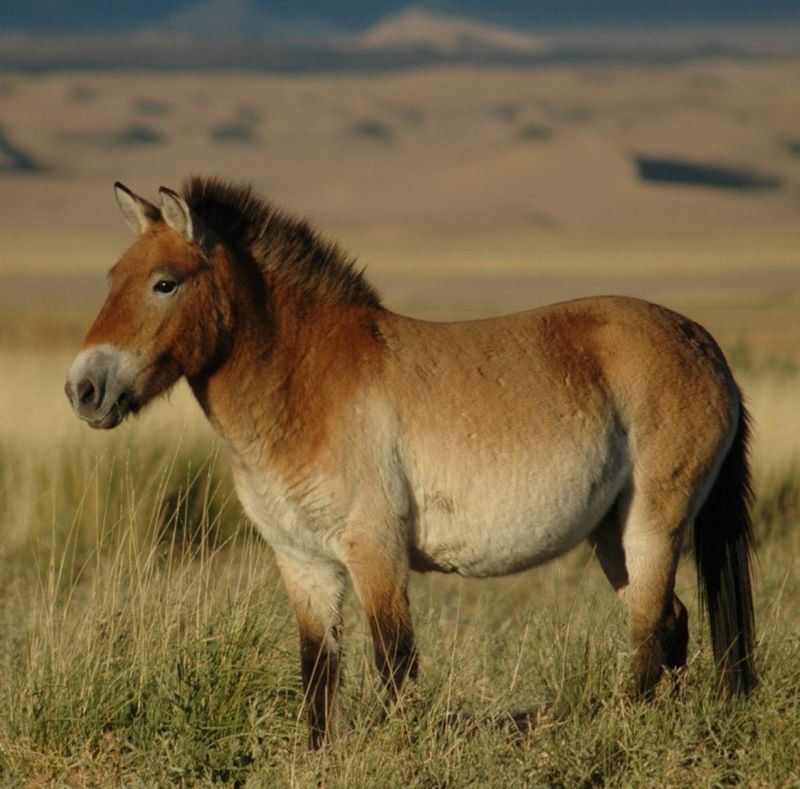
Galloping across the windswept plains of Mongolia for thousands of years, these hardy horses once claimed vast territories. Their historical range stretched from the grassy steppes of Kazakhstan to China’s western borders.
Ancient cave paintings depict these distinctive horses, showing how long they’ve been part of the Central Asian landscape and human consciousness.
3. Distinct Appearance

Immediately recognizable by their stout bodies and distinctive coloration, Przewalski’s horses sport a yellowish-tan coat that fades to white on their bellies. Their manes stand upright like a mohawk, never falling to one side like domestic horses.
Dark stripes mark their legs, and a dark dorsal stripe runs down their back—ancient markings of wild equines.
4. Endangered Status
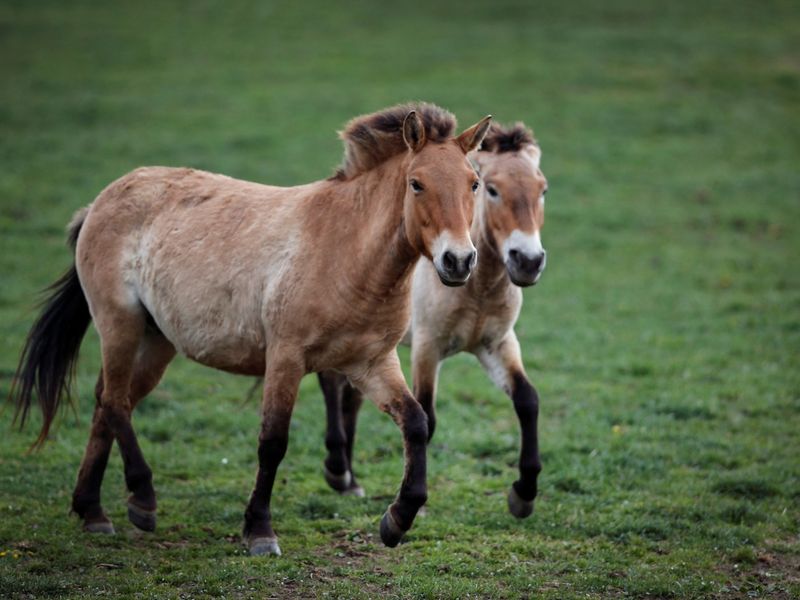
By 1969, not a single Przewalski’s horse roamed freely in the wild—a silent extinction that almost went unnoticed. Remarkably, just 12 individuals captured in the early 1900s became the ancestors of all living Przewalski’s horses today.
From this genetic bottleneck, conservationists have rebuilt the population to over 2,000 animals worldwide.
5. Resilience In Harsh Environments

Winter temperatures in Mongolia can plummet below -40°F, yet these tough horses thrive where domestic breeds would perish. Their compact bodies minimize heat loss, while their thick winter coats provide exceptional insulation.
During brutal winter storms, they’ll turn their rumps toward the wind and lower their heads, standing stoically until conditions improve.
6. Smaller Than Domestic Horses
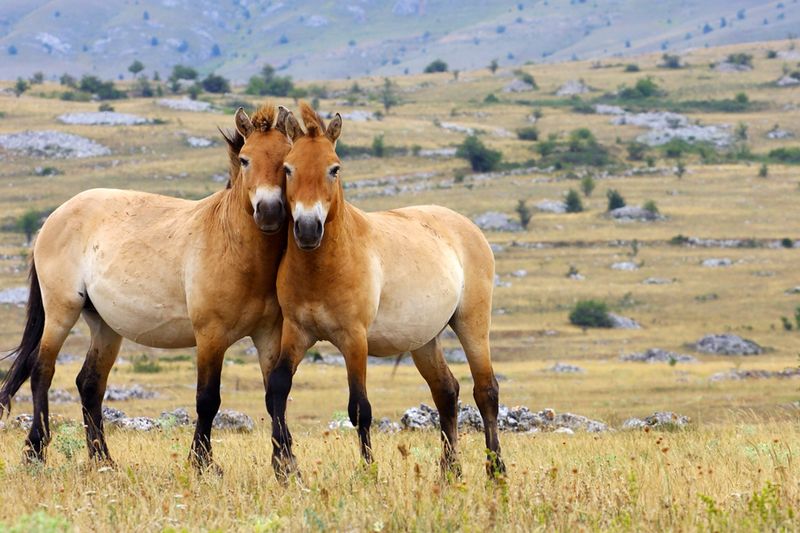
Don’t be fooled by their stocky build—these compact equines typically stand just 12-14 hands high (about 4-4.7 feet at the shoulder). That’s significantly smaller than most riding horses but perfectly adapted for their environment.
Their shorter stature helps them maintain balance on rocky terrain and conserve heat during frigid winters.
7. Mating Season Behavior

Spring transforms these normally peaceful animals into fierce competitors. Stallions rear dramatically on hind legs, engaging in spectacular battles that shake the earth beneath them.
The victorious male doesn’t just win mating rights—he assumes responsibility for protecting his harem from predators and leading them to water and grazing lands. These intense rivalries ensure only the strongest genes continue.
8. Social Structure
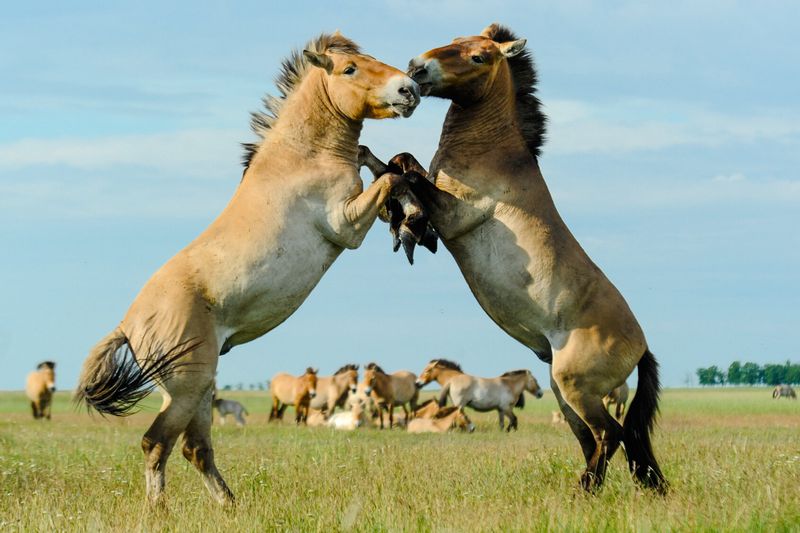
Family means everything in Przewalski society. Tight-knit bands typically consist of one dominant stallion, several mares, and their offspring living in perfect harmony.
Young males eventually leave to join bachelor groups where they practice fighting skills until strong enough to challenge established stallions. The social bonds formed within these groups last a lifetime.
9. Unique Hissing Sound
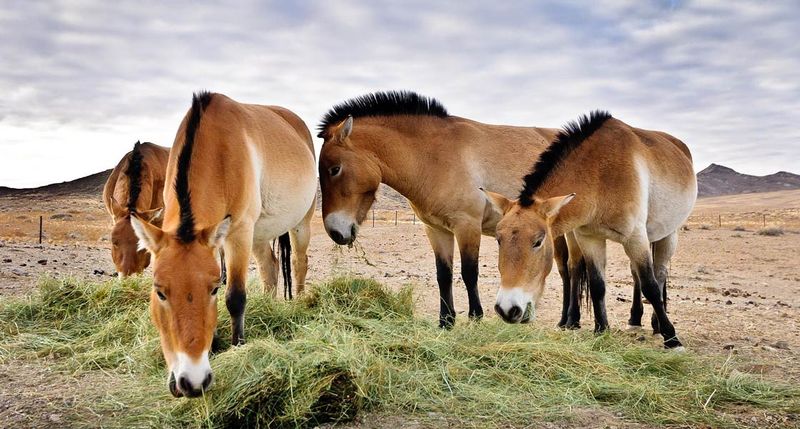
While domestic horses are known for their whinnies and neighs, Przewalski’s horses communicate with an arsenal of unusual sounds. Their signature warning—a sharp, penetrating hiss—alerts the herd to potential dangers.
This distinctive vocalization carries across the open steppe, allowing family members to coordinate movements even when spread out while grazing.
10. Reintroduction Success
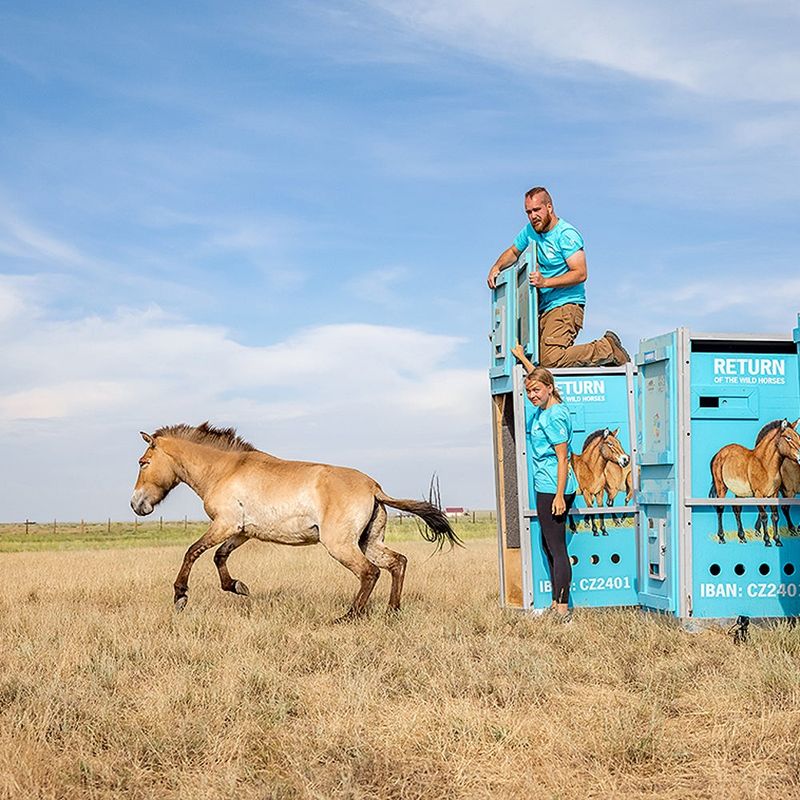
From the brink of extinction to a conservation triumph, Przewalski’s horses now roam free in Mongolia’s Hustai National Park and other protected areas. The first reintroduction in 1992 marked a pivotal moment for the species.
Satellite tracking collars help scientists monitor their movements and adaptation. Against all odds, wild-born foals now outnumber reintroduced individuals in some areas.
11. Herbivorous Diet
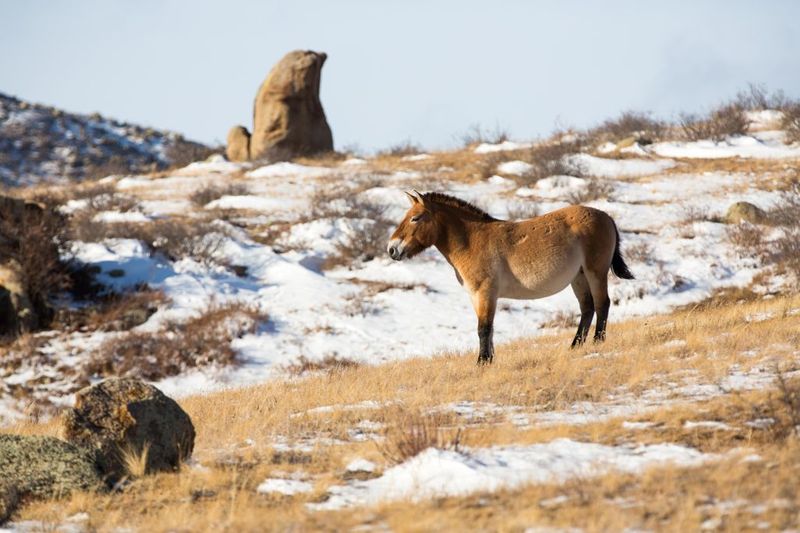
Masters of extracting nutrition from sparse vegetation, these resourceful grazers spend up to 16 hours daily eating. Their menu changes seasonally—tender spring grasses give way to tougher summer plants and dried autumn vegetation.
Unlike domestic horses, they’ll dig through snow using their hooves to uncover buried plants during winter, demonstrating remarkable adaptive intelligence.
12. Dietary Adaptations
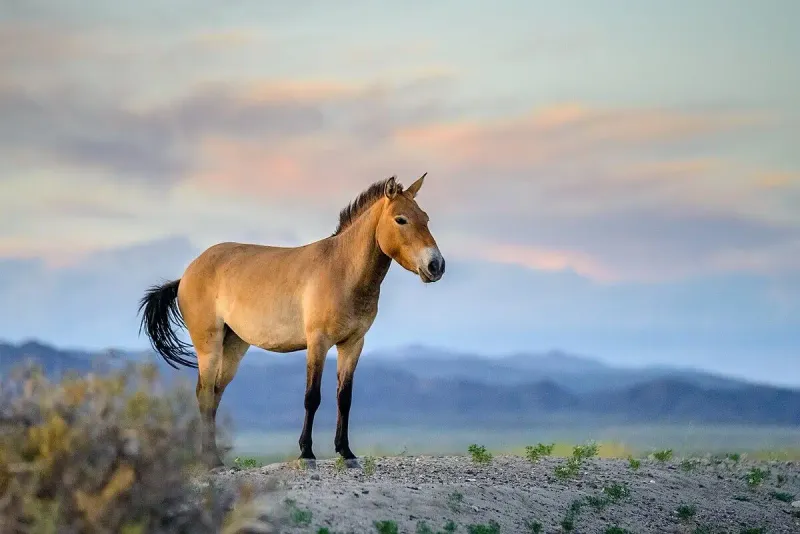
Evolution has gifted these horses with specialized digestive systems that can process rough, fibrous plants other animals reject. Their large cecum—a fermentation chamber in their intestines—breaks down tough plant fibers using beneficial bacteria.
This remarkable adaptation allows them to extract maximum nutrition from minimal resources, a crucial survival advantage in their harsh homeland.
13. Threats To Survival
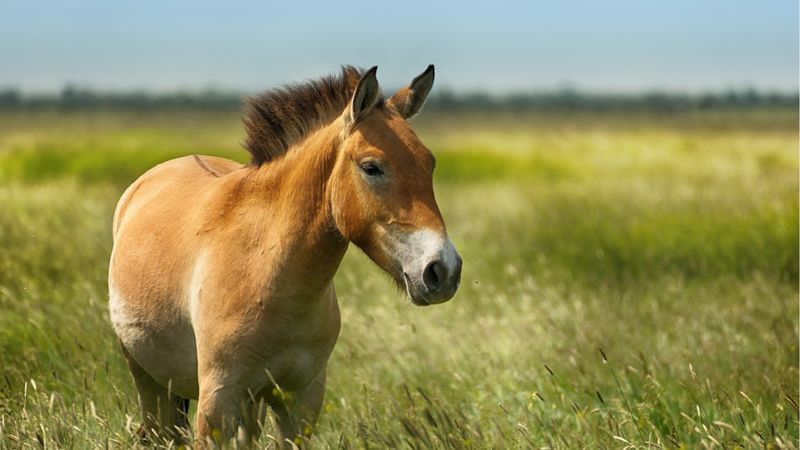
Freedom comes with dangers for these resilient equines. Competition with domestic livestock for grazing land pushes them into marginal territories. Harsh winters, known locally as “dzud,” can decimate populations when deep snow covers food sources.
Climate change intensifies these challenges, while genetic bottlenecks from their near-extinction continue to threaten their long-term survival prospects.

